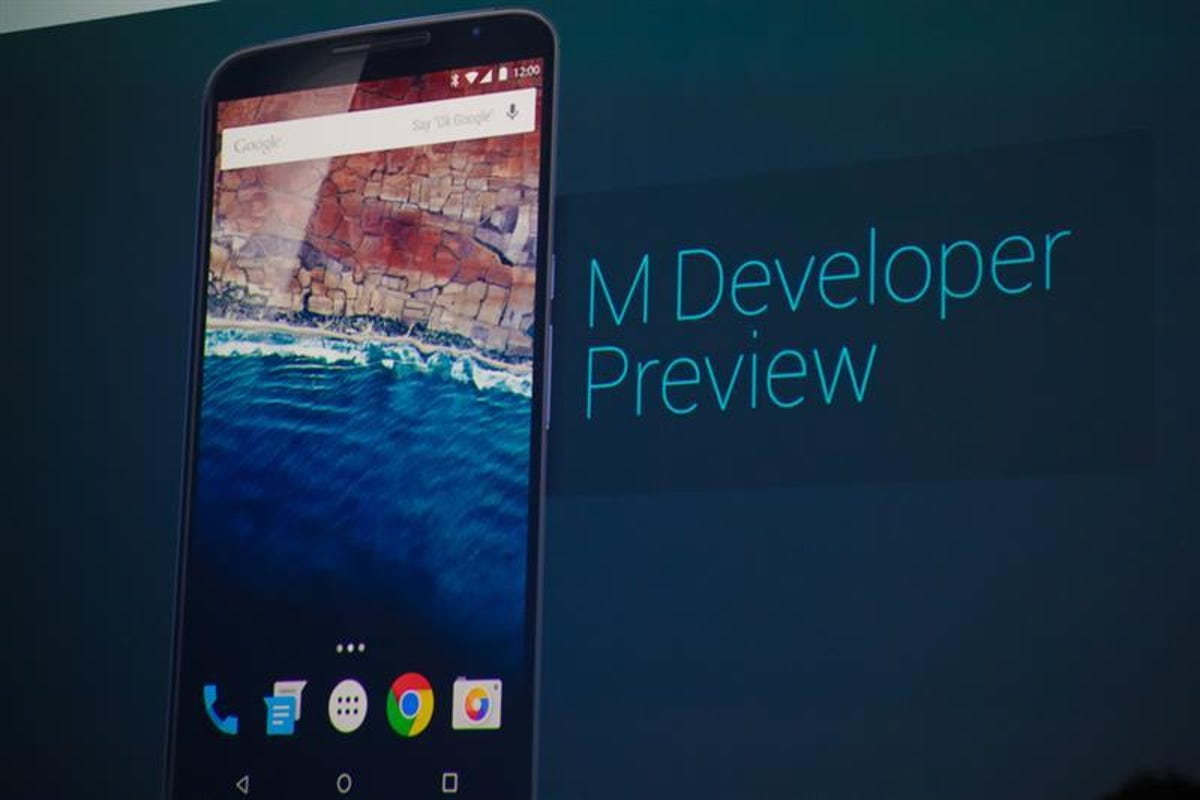
James Martin/CNET
What did you miss by not being at this year’s Google developer’s conference, I/O 2015? A milling-around period with a wraparound screen on which attendees played Pong, a whale swam, and Matrix-like binary rain fell. And oh, yeah — some cool stuff! But don’t despair; we’re here to fill you in on the good, bad, and ugly.
Google I/O announcements (pictures)






Some products rolled out the week prior to the conference. Announced back in March, the update to the nVidia Shield gaming microconsole — notable here because it runs Android apps — finally hit the market. We’ve got a review. And Google rolled out Android Auto, with support from over 35 manufacturers, along with a development kit for its 3D-mapping and motion-sensing Project Tango tablet, which was announced almost a year ago.
The theme: “Here’s to what you build next.”
Android M
Everyone wants to know what their next phone is going to look and feel like; here’s where we find out what to expect. Sundar Pichai started his talk with the statistic that last year, 8 out of 10 phones that shipped ran Android, and showed the range of high to low end devices that represented. Want more statistics? Here you go.
Here’s what’s coming to Google Android M (pictures)






Android M is about “polish and quality” and “improving the core user experience.” The six key areas: app permissions, web experience, app links, mobile payments, support for fingerprint sensors and improved power and charging.
Phone-based payment systems are the new black, in part thanks to Apple Pay . Android Pay will work when you unlock your phone (with or without the fingerprint sensor) and place it in front of NFC terminal. It creates a virtual account for that payment, and it works with any supported card and any NFC-enabled device. It will also be available for in-app payments.
It will now have a smaller set of easily understood app permissions, which you agree to on launch, not on download or update. (As a user, I don’t like that — I decide to install or update based on permissions.) But we’ll be able to revoke permissions on a case-by-case basis as well. Both like iOS.
Mobile Chrome gets custom tabs, site-determined transitions and behaviors, and better handling of links within any application so that it sends you to the correct application.
While a lot of phones have had fingerprint sensors, there’s now a common application programming interface for a more consistent design and easier implementation.
And finally, there a new Doze mode for better power management, which uses motion detection to decide how deep to sleep. In its internal testing, Google found devices lasting up to 2x longer in standby. In addition, it’s supporting USB-C, which will also allow you to select how the device behaves when connected.
You’ll also see better word selection, floating most frequent share options to the top, and simplified volume controls.
Nexus 5, 6, 9 and Player will get Android M for developers as of today.
Android Wear
One of the main improvements is for — wait for it — checking the time, though Google’s extending the metaphor to the rest of the interface. It brings always-on to apps (called “Always on apps”); the last display can remain on screen.
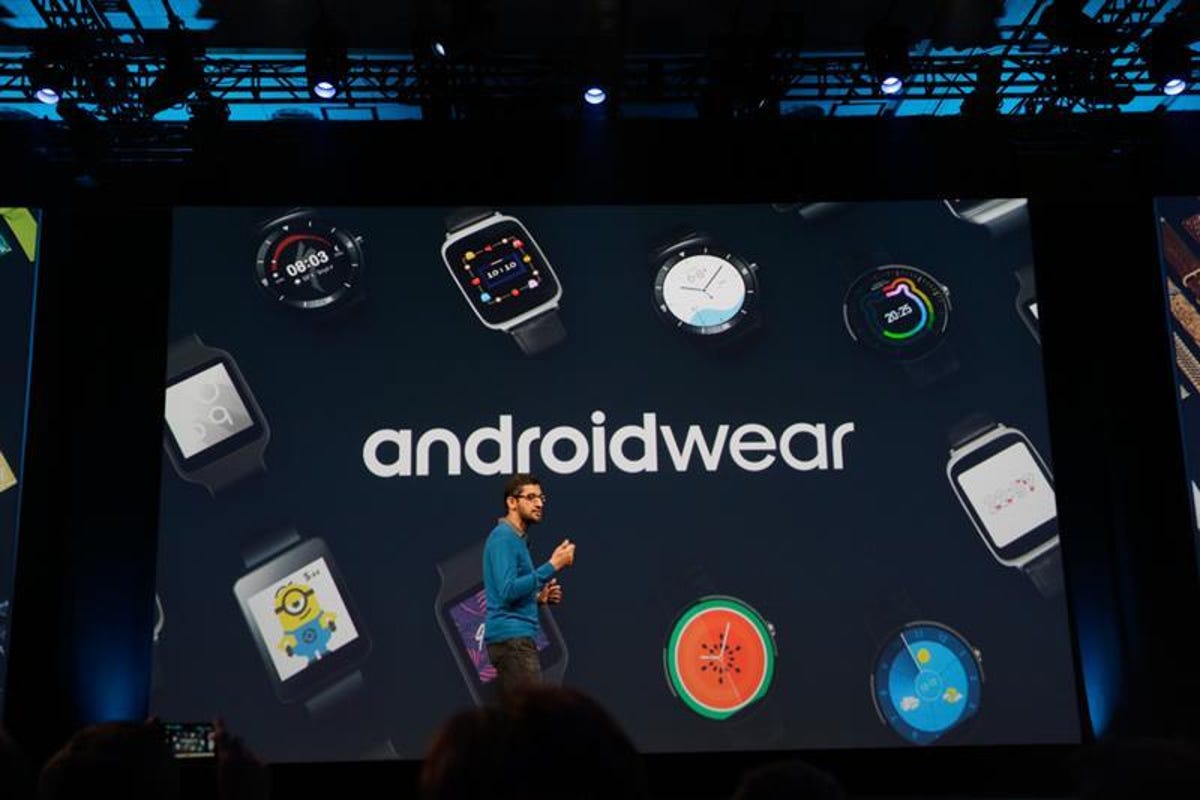

James Martin/CNET
It also adds wrist gestures — I forsee new forms of repetetive stress syndrome — and the ability to draw onscreen and have it translate it to an emoji and send. Touching the watch face lets you quickly launch a new app.
Examples included Foursquare suggesting entrees in a restaurant, train arrival info, and Uber ride requests and tracking. They also highlighted apps that take advantage of a Wear device’s built-m sensors.
There are now over 4,000 apps for Android Wear.
Consumer services: Now, Photos, Play
Google’s concentrating on improving its services’ experience on mobile devices, including speech-recognition accuracy and better search results, which it credits to its investment in machine-learning research.
6 things the new Google Now can do for you (pictures)






Google Now is becoming more like an assistant, push rather than pull. It’s gathering context (location, time, your needs) and understanding pronouns and doing something useful for you with that information — provide answers. Instant prompts and info, which Google’s calling Now on Tap (NoT).
It both answers questions quickly and brings up more information, like movie reviews after searching for a movie, photos of dishes after looking at a menu. NoT will work inside other apps via tap on hold on the home button. You can also add reminders via NoT.
Google’s photo handling enters its third life: it started as Picasa, then was folded into Google+ and now is a service all its own. Integrating its machine-language research, Google hopes to help navigate tons of photos to find what you’re looking for with Google Photos.
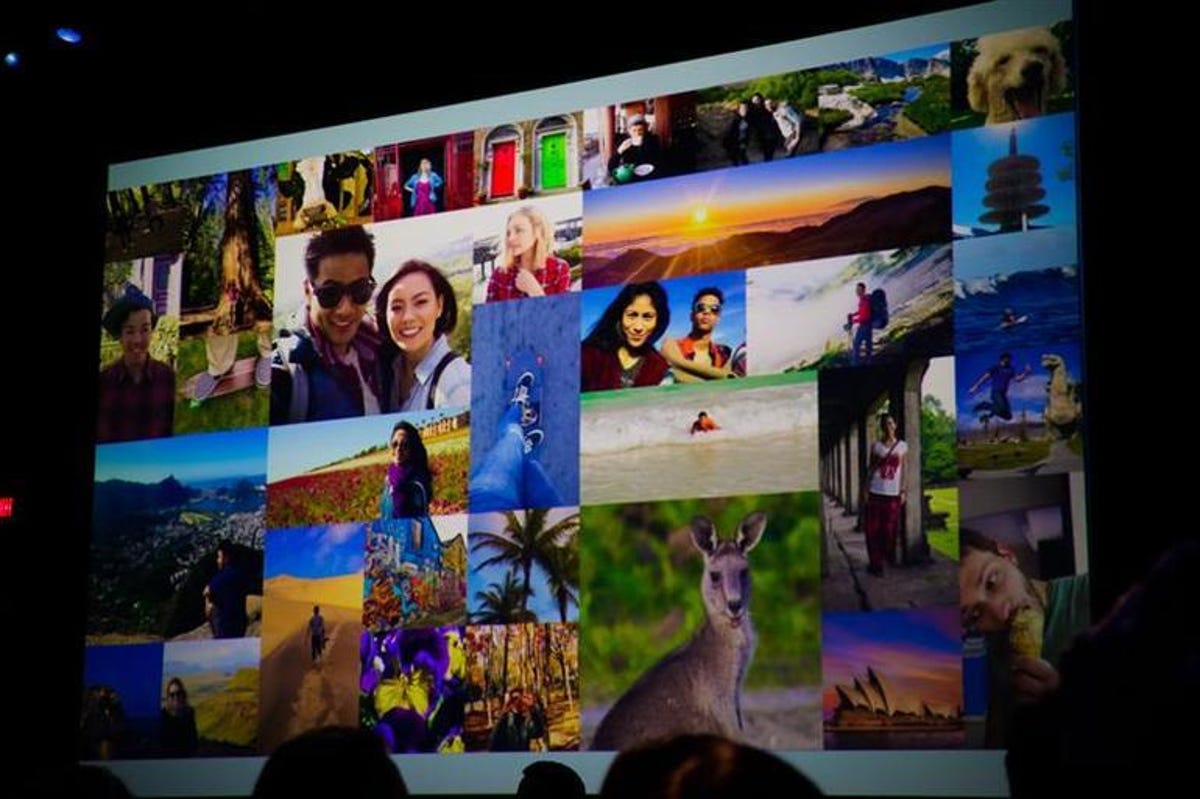

James Martin/CNET
It’s a cloud-based home for all your photos and videos, organization tools, and sharing and saving tools. The app looks annoyingly like iOS’s Moments view, with a quick scroll through time. It even scales time through pinching and zooming like iOS’s app. It also has a Collections view.
Automatic organization takes place by Google silently and privately tagging and mapping to people, places and things. In addition to editing, it can create collages, animations, movies, stories and albums; it can also autocreate them via an assistant, which you can then edit.
Pressing and holding on one photo and dragging will let you select all; you can get a single link to all the items and share the link, which you can share any way you want. If it’s to another, logged in Google accountholder, they’ll be able to download them all as well.
With Google Photos, you can backup and store unlimited, ; that means up to 16 megapixels, and 1080/60p video. Sorry photographers, not full resolution. And it starts today for Android, iOS and the web.
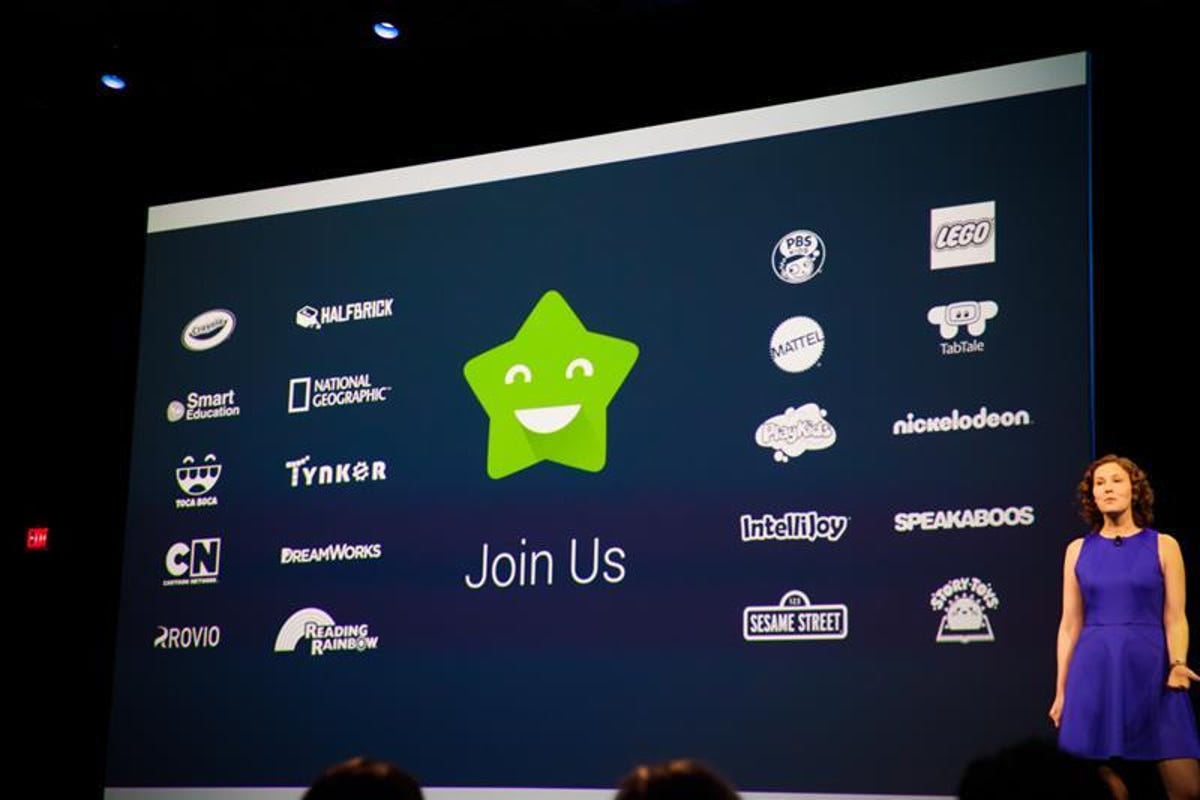

James Martin/CNET
Google Play will deliver more targeted search results and collect then into topics. One third of Android users have kids 12 and under, so there’s going to be family-friendly tools, like age ratings, a family home page, family friendly search results, and a popular character browser. There will be third party ratings, in-app purchase protection and ad-supported family apps.
Emerging markets
Android One, Google’s stripped down version of the operating system for lower-end devices, is rolling out to Nepal, Bangladesh, The Philippines and Turkey. The company is also working on “rethinking” its core products to require less data bandwidth and in-device.
This includes a “light” search results page and serving optimized versions of web pages (starting in Indonesia). India has a pilot project for a network quality estimator that, for instance, temporarily blocks images on the fly, and provides offline support in Chrome. YouTube offline comes to India, Indonesia, Vietnam and The Phillipines.
Google Maps expands its transit information and — yes! — the ability to work offline. This includes map searches when offline and some search results and turn-by-turn voice directions.
In other news, Google Inbox is now available to all.
Developer tools
Android Studio 1.3 preview includes improved Gradle build speed and new memory profiler. You’ll get full editing and debug support for C/C++ with error correction and code completion. It announced Polymer 1.0 and Polymer elements (drop in widgets, flows and so on). The iOS library gets a cohesive SDK, with CocoaPods as the default distribution channel.
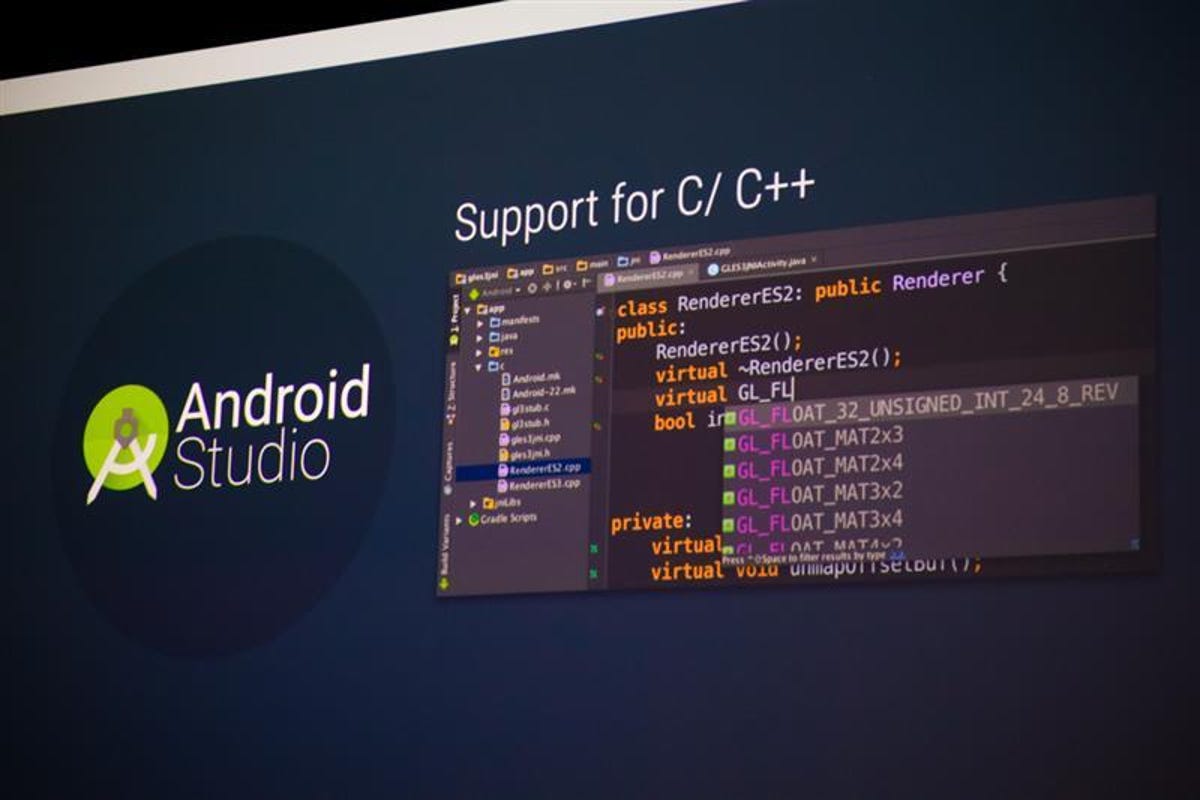

James Martin/CNET
Google also launched Cloud Test Lab which will allow developers to automate testing across the top 10 Android devices. It will be available soon in the Google Play developer console.
Cloud Messaging now extends to iOS and you can now subscribe to topics in the client app. It will let you send push notifications via your apps. Universal App Campaigns can handle ad distribution for smaller developers. Measurement for app install ads comes to iOS and extends to more ad networks.
Google Play developer console will let you see how many people are viewing, installing and purchasing your apps, and A/B test Play Store listings. Developers will now be able to create their own Google Play home page to consolidate their apps.
The company has also integrated Google Analytics into AdMob.
Udacity will be launching a 6-month course for $200 a month for the Android Nanodegree.
Smart Home and the Internet of Things
The big problem is for device manufacturers trying to make all their devices interact. “Fortunately, we own Nest.” It’s looking provide an end-to-end operation system for the IoT: Project Brillo.
Brillo is essentially “the lower-layers of Android” so it can run with a minimal footprint but have connectivity and power management. “Weave” is the communications layer (the common language, provided in standardized schemas); it will have a certification program.
Brillo enters developer preview in Q3 2015, and Brillo preview in Q4.
Virtual Reality and more
Beforehand, Google’s Advanced Technology and Projects (ATAP) group talked of building “seemingly impossible things”; we didn’t get the Google TARDIS we wanted, but we did see some cool VR experiences and tools.
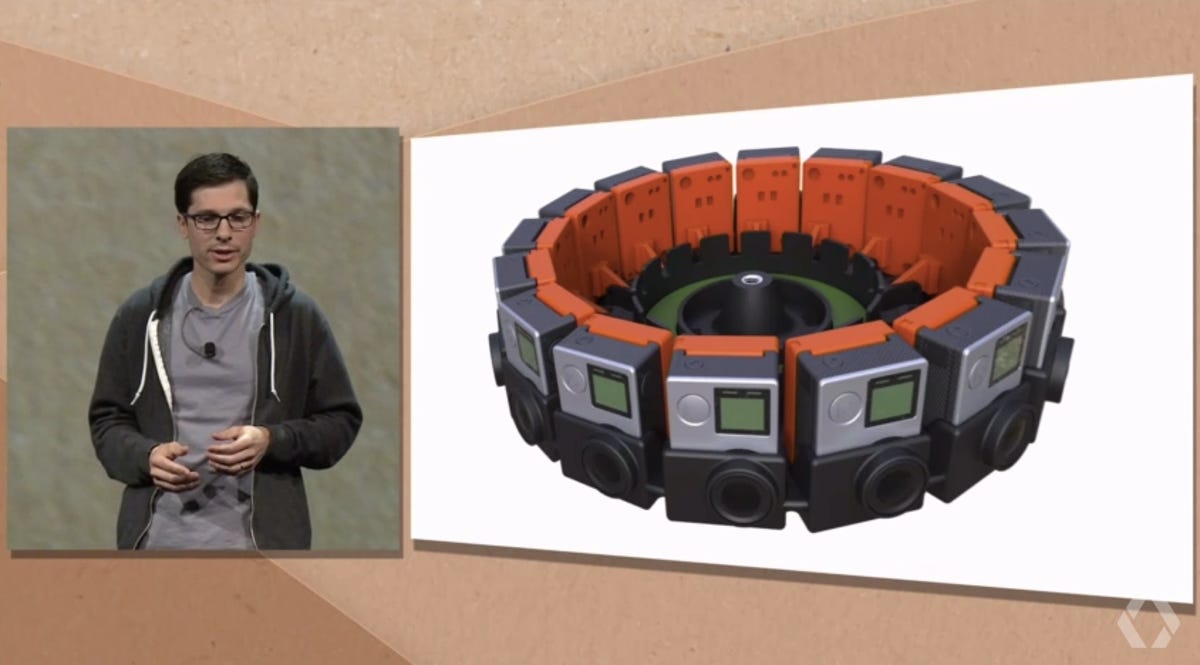

James Martin/CNET
Google Cardboard, its cheap phone-based VR viewer with 1 million users, has been redesigned to fit phones up to 6 inches, a new button that works with any phone, and which takes only 3 steps to assemble. Attendees got freebies.
Its software developer’s kit will now let you build apps for iOS, too.
Virtual reality in the classroom turns into Expeditions. it’s a box containing Cardboard, phones, and a teacher’s tablet. Its partnering with big names, like the American Museum of Natural History, for guided tours.
How do we get all that immersive content? Jump. It’s a camera rig (with a circular array of 16 camera modules) plus assembler and player, with DIY plans available to all this summer. If you need a prebuilt, Jump-ready rig, you can now go GoPro .
The assembler takes 16 video feeds and interpolating in-between viewpoints, and stitches them together to create seamless, depth-corrected stereoscopic video.
YouTube will support Jump starting this summer; this week it will support nonstereoscopic content.
Project Loon balloons, Google’s balloon-based Internet connectivity project, can spend more than 100 days in the air, providing 10Mbps connectivityy with 500m accuracy and can link to each other for a 4x coverage area. Google’s expanding its partnerships for local rollouts.
See CNET’s archived liveblog, and check out our complete coverage of Google I/O 2015, including video highlights.




